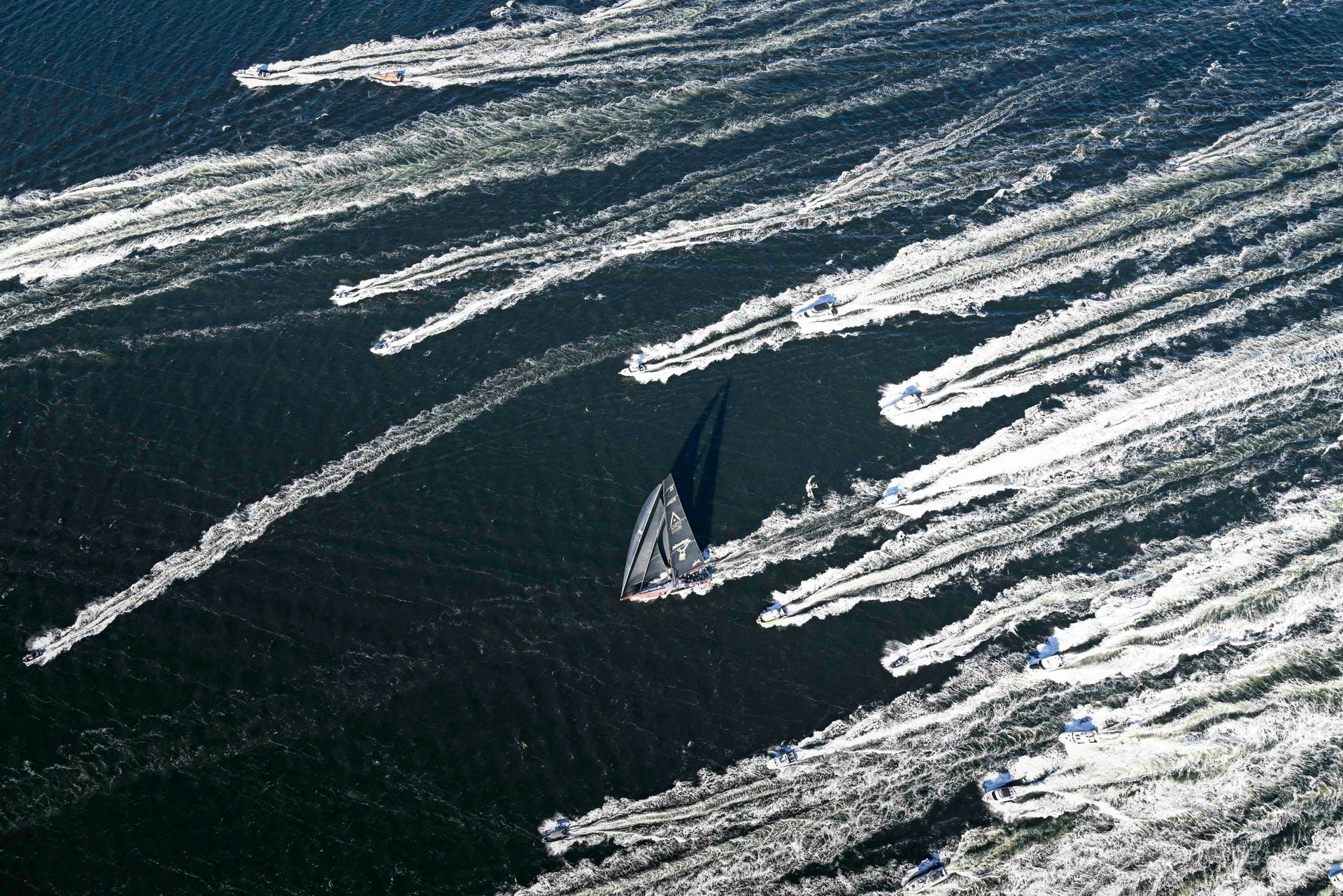ETCHELLS WORLDS SPEED READING
ETCHELLS WORLDS SPEED READING
New World Champion Martin Hill Shares Victory Insights

Sailing in a 94-boat fleet that’s stacked with past world champions, Martin Hill didn’t have high expectations on his chances of winning the 2018 Etchells Worlds in Brisbane, Australia. But after a 6th-place finish at the 2017 Worlds and some strong results earlier in 2018, Martin and mainsheet trimmer Julian Plante were joined by Sean O’Rourke as a new bowman and Olympic 470 medalist Mat Belcher as new tactician and the combination began to click.
The team’s speed, decision-making, and fleet management was excellent in the first two races; both times, their boat, Lisa Rose, rounded the first mark in the lead and earned second-place finishes. “In the opening race, when we rounded the weather mark,” Martin says, “I thought, ‘Game on!’”
Yet a world championship spans six days and nine races, and the Lisa Rose team had to evolve to emerge at the top of the field on the last day. What were some of the keys?

Making the most of individual abilities
“We developed a nice chemistry, with each person respecting each others’ ability, ” Martin says, describing how each team member worked with him to shape their boat speed and tactics. “Julian, on the mainsail upwind, would manage our mode—high and slow or fast and low. Sean was on the kite sheet downwind, calling when to sail lower and higher. And in a tactical situation, Mat would say, ‘My boat’ for the short term, such as when calling for a lee-bow tack.”
“I knew instinctively that Mat would be really good,” Martin adds. “I always admire people in the 470 class and how good they are in the chess game they play. I had previously sailed with
Sailing in sync with the waves
“After the first two races, we were leading the event,” Martin says. “It was pretty exciting. But we were a little bit concerned about our running. In the first race, Ian Murray jibed and got by us downwind, and in the second, Lawrie Smith. In another race, on the third day, we were third to the top mark and dropped down to sixth.
“We began looking at drone footage of the racing in our morning debriefs and watched how other people were sailing downwind. We saw a combination of things. We had been sailing pretty aggressively in the waves and realized others weren’t as aggressive—they were sailing more in sync with the waves. There was a time to push hard down the waves and a time to be more coordinated between me and Sean, the kite trimmer, plus use a bit of crew kinetics.
“We also thought our VMG kite was underrated,” Martin says. “We found we could use that and sail deeper with the pole forward. Using the runner, you’d think you could sail deep, but we feel the VMG was the sail to work with in those conditions.”

Starting strategy modified
The starting line was 1.2 kilometers long, so choosing the correct end could pay off big, as it did in the first race when Lisa Rose started towards the right-hand end and benefitted from a persistent right shift. But a 49th in the fifth race convinced the team to be more conservative.
“Early in the regatta, we looked for leverage on the line,” Martin says, “but later we came back to what Olympians do to reduce risk by starting near the middle where fleet density wasn’t too great. That way we could play both sides, even in a big field.”
For the final race, the strategy changed again. “We made sure we stayed with Mark Thornburrow’s Racer C,” Martin says. “With 94 boats, a lead could disappear in a heartbeat. They picked the favored starboard end and after a general recall, we both stayed there and got a great start to leeward of them. Mat is in a class of his own—we knew there was a persistent shift to the left and our plan was to sail slow and high. It wasn’t aggressive, it wasn’t match racing. We just knew we had to get across to the left and we did.”
Lisa Rose finished sixth in the last race with Racer C in 10th. The final margin between first and second place was 17 points.
More information on starting strategies can be found here.

Sail choice on the edge of development
The Lisa Rose team had been involved with a Tom King-led North development program involving a radial main and radial jib designs. The team chose to sail the Worlds with two radial jibs, although the heavier sail stayed mostly in the bag. “We were very impressed with the lighter sail,” Martin says. “It’s more suitable in light-medium than lighter air, and it needs more development. But it was good for this regatta. It gave us awesome speed in medium-bumpy conditions.”
“Julian Plante had been a long-time North sailmaker,” Martin says. “His job was speed and he knew we needed to be conservative with our sail choices. We went with standard spinnakers, but Julian agonized over which mainsail design to use. We ended up going with North’s PC+ mainsail because we expected a lighter regatta—and it was best when the breeze dropped a bit.”
“We used what North had and it delivered,” concludes Martin. “Julian was conscious of working with what he was familiar with. You can’t get too far from North’s test bed over so many regattas. Their sails have been successful for a reason.”
Final words
“We had a great chemistry of openness and working together with a goal,” Martin says. “I have an incredible sense of relief and satisfaction. The other day Julian called me and said he had a dream we were world champions. And it’s true!”





